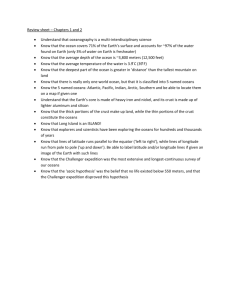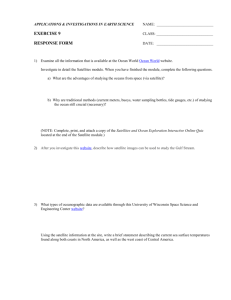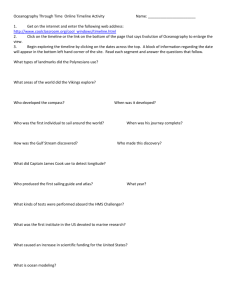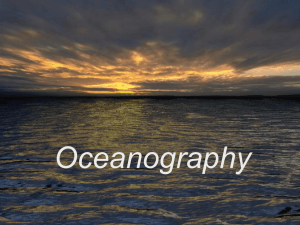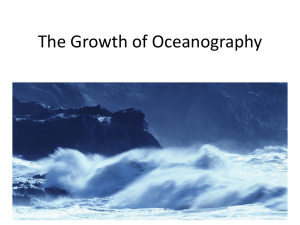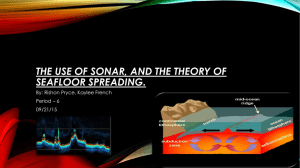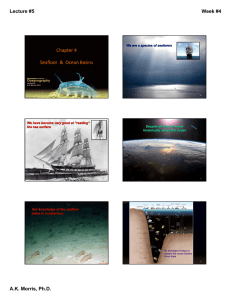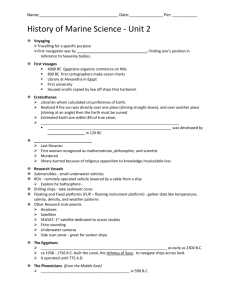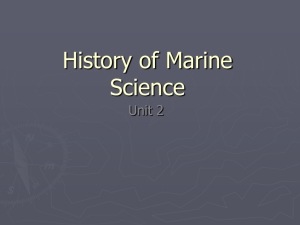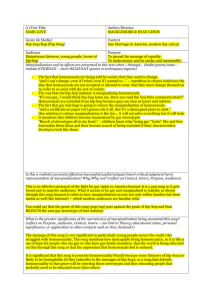webquest history of oceanography
advertisement
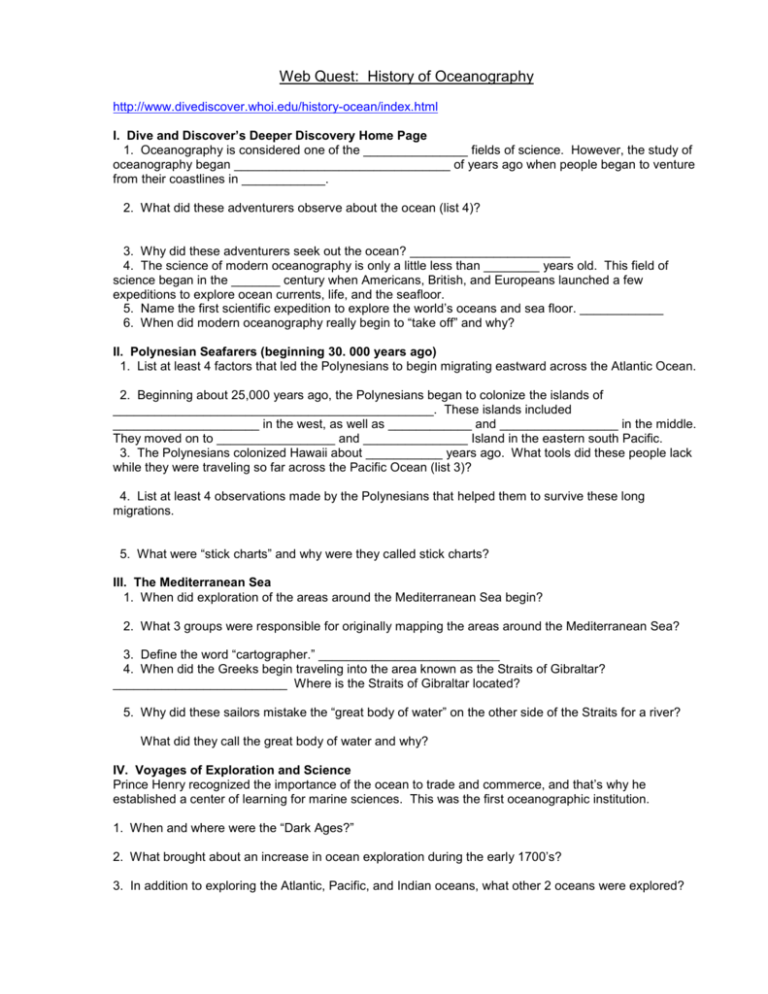
Web Quest: History of Oceanography http://www.divediscover.whoi.edu/history-ocean/index.html I. Dive and Discover’s Deeper Discovery Home Page 1. Oceanography is considered one of the _______________ fields of science. However, the study of oceanography began _______________________________ of years ago when people began to venture from their coastlines in ____________. 2. What did these adventurers observe about the ocean (list 4)? 3. Why did these adventurers seek out the ocean? _______________________ 4. The science of modern oceanography is only a little less than ________ years old. This field of science began in the _______ century when Americans, British, and Europeans launched a few expeditions to explore ocean currents, life, and the seafloor. 5. Name the first scientific expedition to explore the world’s oceans and sea floor. ____________ 6. When did modern oceanography really begin to “take off” and why? II. Polynesian Seafarers (beginning 30. 000 years ago) 1. List at least 4 factors that led the Polynesians to begin migrating eastward across the Atlantic Ocean. 2. Beginning about 25,000 years ago, the Polynesians began to colonize the islands of ______________________________________________. These islands included _____________________ in the west, as well as ____________ and _________________ in the middle. They moved on to _________________ and _______________ Island in the eastern south Pacific. 3. The Polynesians colonized Hawaii about ___________ years ago. What tools did these people lack while they were traveling so far across the Pacific Ocean (list 3)? 4. List at least 4 observations made by the Polynesians that helped them to survive these long migrations. 5. What were “stick charts” and why were they called stick charts? III. The Mediterranean Sea 1. When did exploration of the areas around the Mediterranean Sea begin? 2. What 3 groups were responsible for originally mapping the areas around the Mediterranean Sea? 3. Define the word “cartographer.” __________________________ 4. When did the Greeks begin traveling into the area known as the Straits of Gibraltar? _________________________ Where is the Straits of Gibraltar located? 5. Why did these sailors mistake the “great body of water” on the other side of the Straits for a river? What did they call the great body of water and why? IV. Voyages of Exploration and Science Prince Henry recognized the importance of the ocean to trade and commerce, and that’s why he established a center of learning for marine sciences. This was the first oceanographic institution. 1. When and where were the “Dark Ages?” 2. What brought about an increase in ocean exploration during the early 1700’s? 3. In addition to exploring the Atlantic, Pacific, and Indian oceans, what other 2 oceans were explored? 4. Captain James Cook, beginning in __________, circumnavigated the globe 3 times over 10 years. Cook also prevented what disease among his crew? ______________ How? ______________________ 5. John Harrison’s 1728 invention of the first marine chronometer used a ______________ instead of a pendulum in order to give accurate ________________ on rolling ships. What specifically did this allow sailors to do better? V. Benjamin Franklin: Discovering the Gulf Stream 1. What did Ben Franklin observe off the East Coast of the United States? _____________________ 2. How fast does this current move? _______________________ VI. Charles Darwin and the Voyage of the Beagle 1. Charles Darwin led an expedition on the British warship, named the _________________________, in the year ________ to the ________________ islands. While there, his observations led him to his famous theory of _______________________________________. According to Darwin’s theory, variations within species occur _________________________ and survival or extinction of an organism is determined by the organisms ability to ________________________________________. VI. The Challenger Expedition 1. The Challenger expedition was from _________ to _______________ (years). 2. This great ship had its own ____________________________, _________________________, and other scientific equipment on board. 3. The ship had different types of samplers to ____________________________________________ _______________________________________, and nets to capture animals from different depths. Winches- mechanical engines- were used to lower and hoist _________________________ lines to ____________________________________________________. 4. The Challenger crew discovered the deepest parts of the ocean. __________________________ ________________ is located in the ___________________________________. The sea floor in this area is more than _______ miles deep. 5. How did other countries react to the discoveries of the HMS Challenger? VIII. The Oceans as a Battlefield 1. Why was SONAR first developed? 2. SONAR is an acronym for ____________________, ________________________, and ____________________. 3. How was SONAR helpful to oceanographers? 4. What is echo sounding used for today? IX. Continental Drift and Seafloor Spreading 1. Less than _________ years ago, German scientist _____________________________________ discovered evidence which led him to believe that all of the continents were once _________________ but had later ________________________. 2. List 3 pieces of evidence cited by him which led to his findings. 3. His theory, proposed in the year __________, was called the _______________________________ ___________________________________. 4. What evidence was discovered during the 1950s and 60s that helped prove Wegener’s theory? 5. What equipment was used to make this discovery? X. Ocean Drilling 1. What are core samples? 2. These cores provide evidence of what two theories? 3. Cores also provide evidence of how the Earth’s ________________ has changed during its history. 4. Why are scientists better able to obtain information about Earth’s history from these rocks that have been found on or below the seafloor than from rocks on Earth’s surface?

